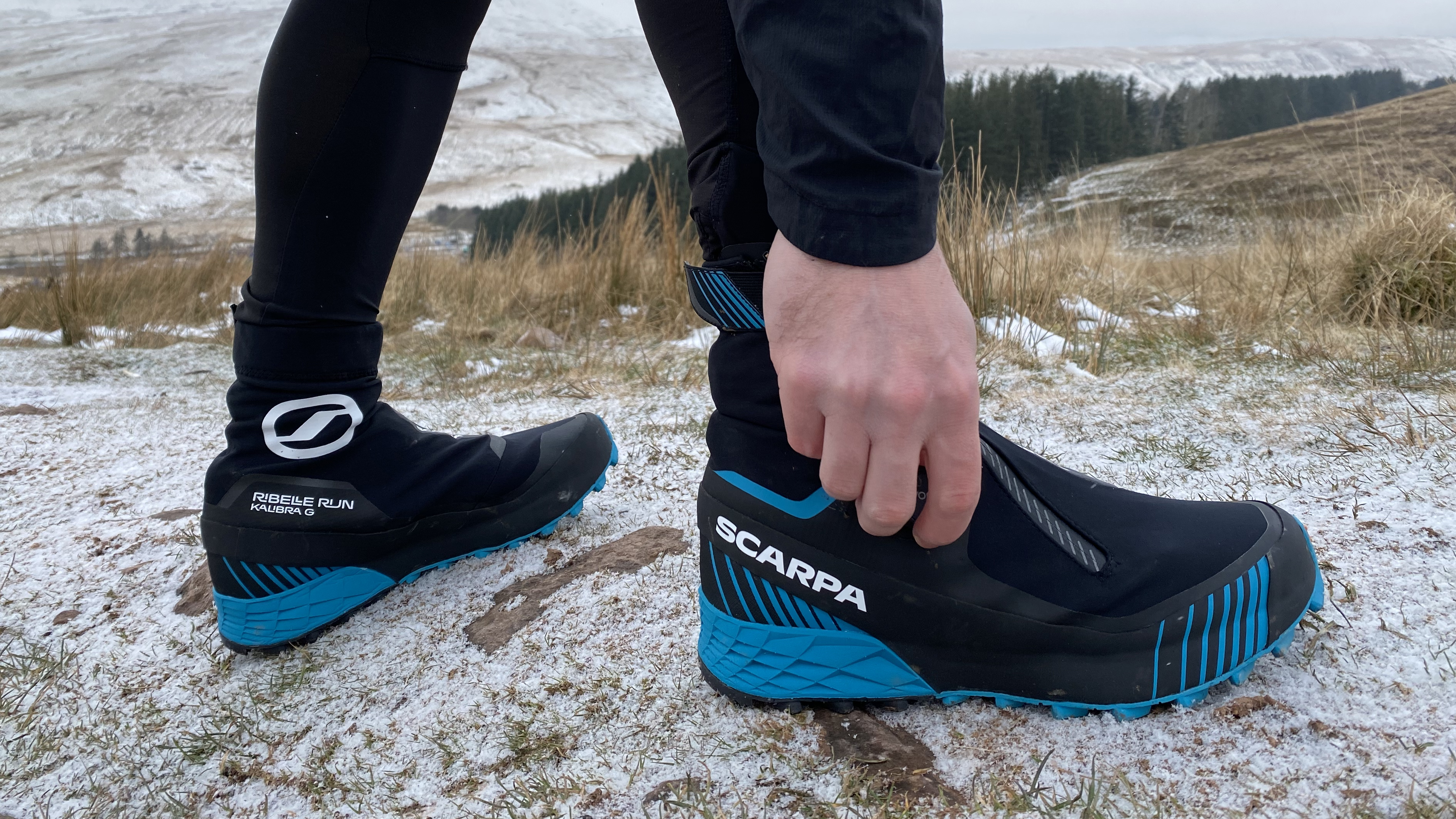
Italian technical footwear giant Scarpa describe the Ribelle Run Kalibra G winter trail running shoe as an ‘all-weather, all-terrain juggernaut’. Taking the foundation of its standard trail shoe and complementing it with mountaineering inspired features and a Boa fit lacing system, the result is something that would look more at home on K2 than down at the local park. Make no mistake, this is a mountain running shoe, one built to cope with snow, scree and summits.
Meet the reviewer
Scarpa Ribelle Run Kalibra G: first impressions
In the winter of 2022, I tested the very similar La Sportiva Cyklon Cross GTX winter running shoes. While my ‘Black-Azure’ Scarpa test pair weren’t quite as eye catching as the waspish yellow and black of the La Sportivas, they still have that racing car/space boot look about them. The blue stripes suggest speed, while the integrated gaiter wouldn’t look out of place on the set of Star Trek. This space age feel is enhanced by the lack of laces, thanks to the Boa fit system. Boa’s been doing the rounds for a while now (23 years, in fact!) but its fit system still feels wonderfully futuristic.
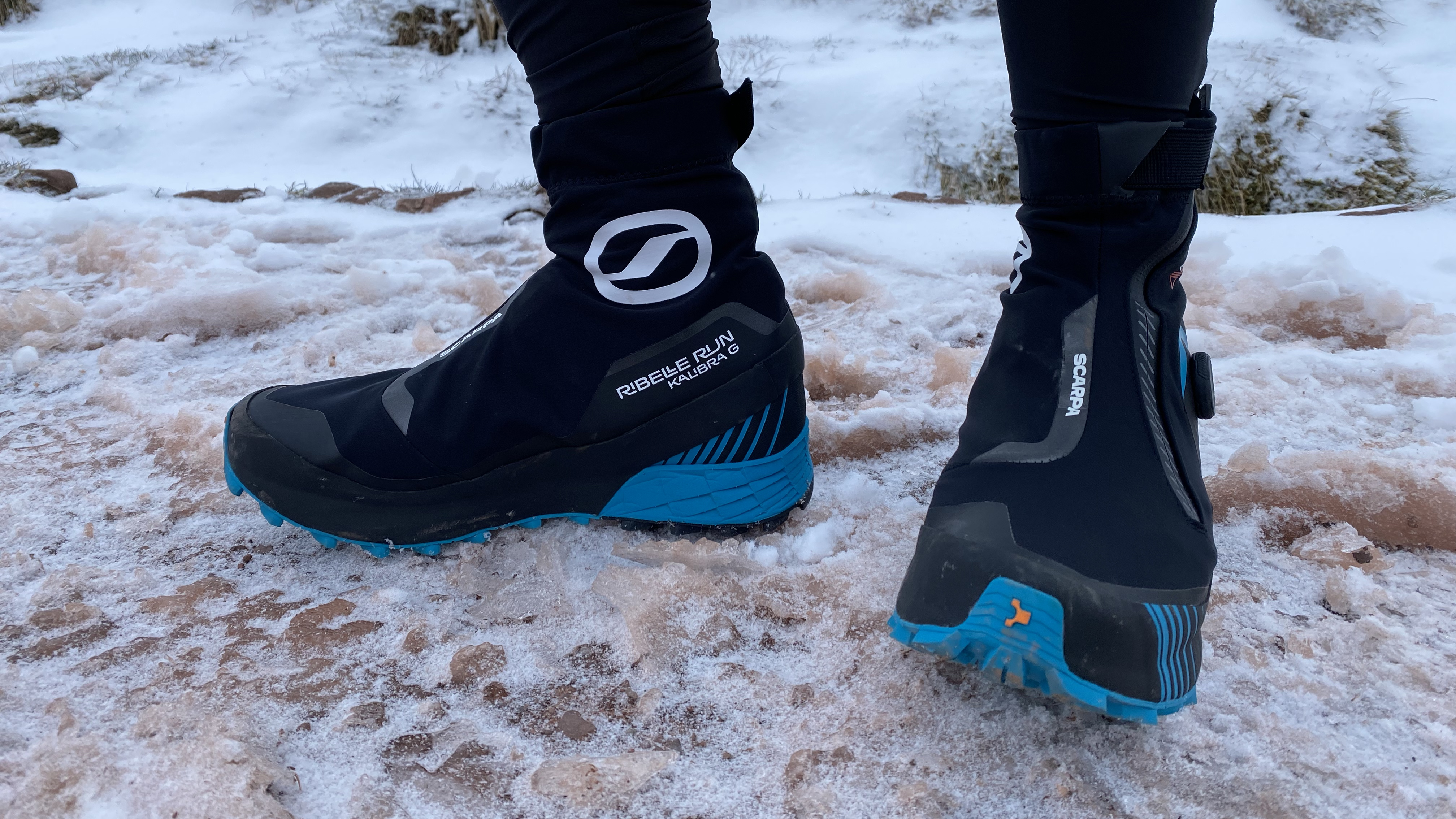
RRP: $249 (US) / £240 (UK)
Weight (per shoe): 370g / 13 oz
Drop: 4mm
Colors: Black/Azure
Best for: Wintry runs and hikes
I like that they have a bit of a character but, at first glance, they hardly look lightweight or built for running. However, get beneath this racer’s bonnet and you soon realise that its basically Scarpa’s Ribelle Run Kalibra HT with a protective gaiter. The penalty for this level of protection is 60g per shoe, with a total weight of 740g per pair. This is heavy for a trail running shoe, especially when you consider three Hoka Tecton Xs weigh less than two of these. Nevertheless, for winter mountain running, this kind of protection is very desirable and, besides, they weigh 20g less per pair than the La Sportivas mentioned above.
Anyway, enough about weight and protection. Let’s get into what they’re actually like to wear. The sock-like fit is immediately comfortable and, once tightened up, the foot feels nicely locked in. There’s a little wiggle room at the toes, though not so much that I’d be concerned about them bashing into the front of the shoe during speedy descents.
As mentioned, the Ribelle Run Kalibra G makes use of Boa’s lacing technology. For the uninitiated, this is a system of stainless-steel wires threaded through the shoe’s upper and tightened or loosened using a dial. It allows for even tightening across the shoe and it also never comes undone, unlike traditional laces. Crucially for winter adventures, it requires less dexterity too, so you can manipulate the fit while wearing gloves. Plus, tightening is also quick, which is half the battle when you’re dealing with the cold.
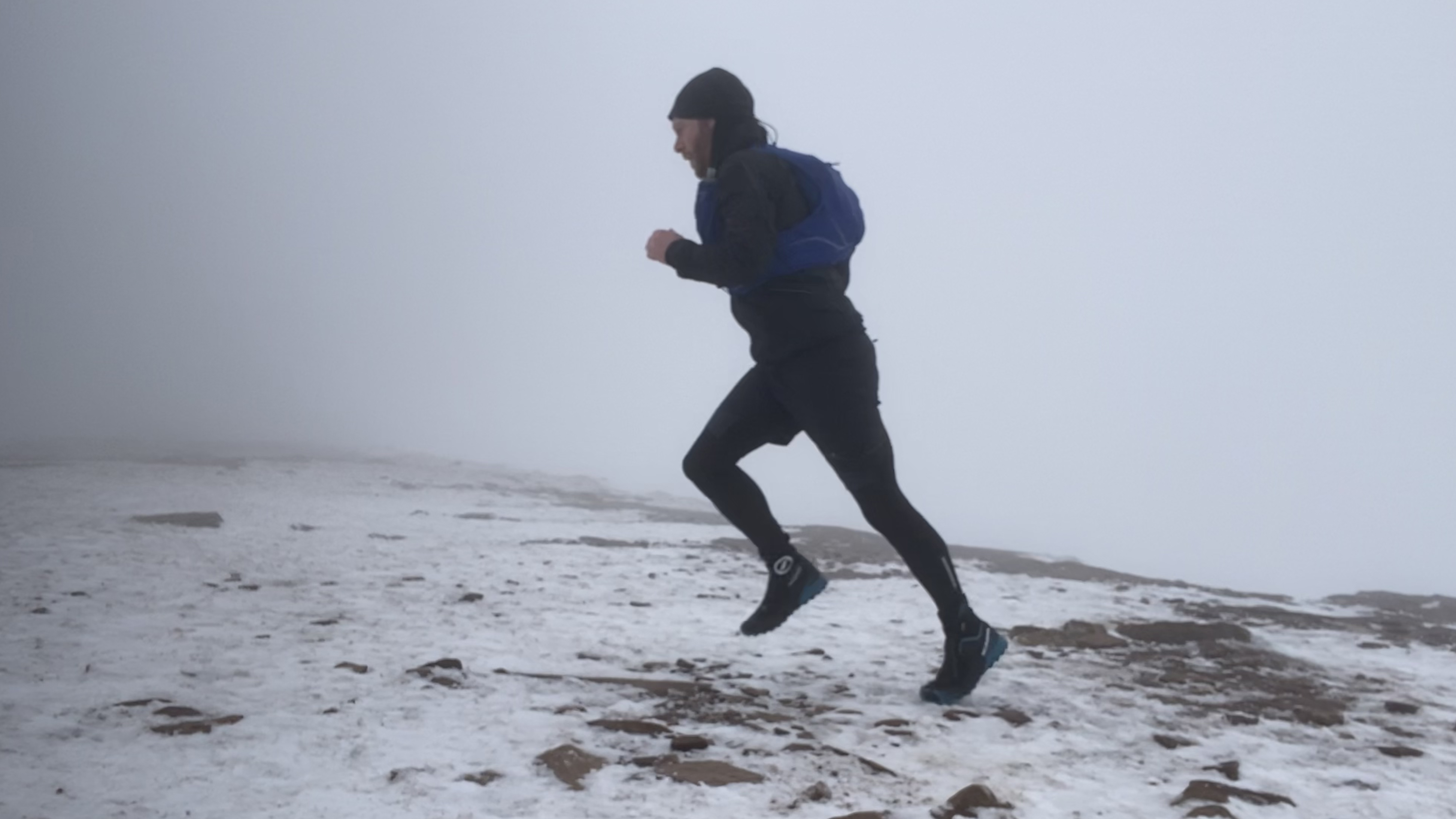
Boa has its disadvantages too. The even tightening system means that you can’t tighten or loosen specific zones like you can with normal laces. As well as this, it’s unsurprisingly more expensive for brands to incorporate and the cost gets passed onto the consumer. As an example, Scarpa’s Ribelle Run, a standard trail running shoe with Salomon-style quick lacing, costs £160 in the UK, while Scarpa’s Ribelle Run Kalibra HT (not available in the US), which uses the Boa system, costs £170.
Boa isn’t the only third party at work. The Ribelle Run Kalibra G also incorporates Polartec’s Windbloc for the first time in a shoe. As its name suggests, this polyurethane membrane provides a shield against the wind, while it’s also water repellent and highly durable. It provides the gaiter with the stretch required for dynamic pursuits. Crucially, it’s also breathable, allowing moisture and heat to be dispersed into the air.
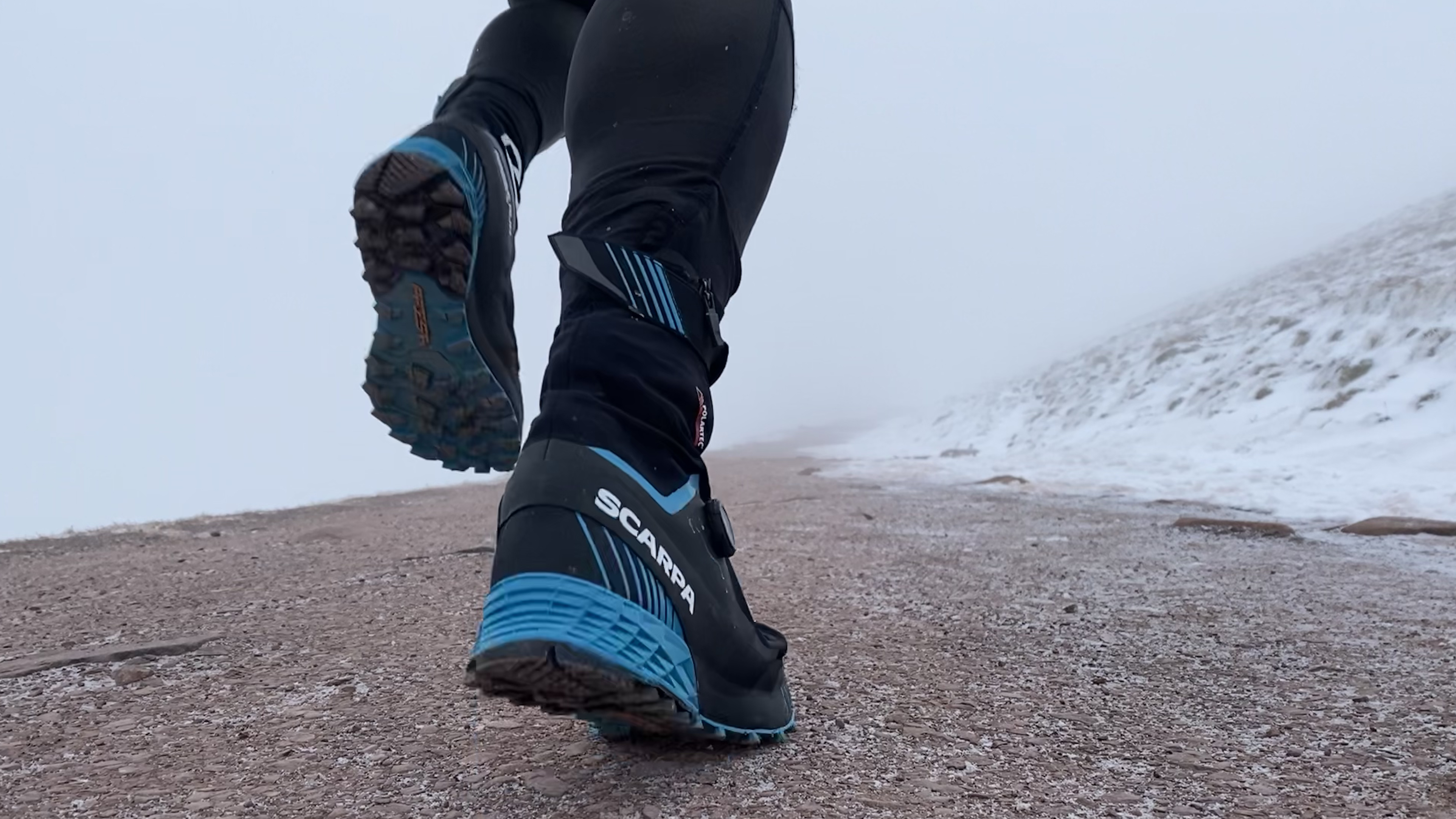
Scarpa’s footwear is generally expensive anyway and when you throw in Boa’s system and Polartec, you end up with a shoe that costs a pretty penny. So, for them to be worth the investment, you need to be a real winter warrior when it comes to mountain running, or use them as a relatively lightweight hiking shoe.
The gaiter is fastened up via a water-resistant YKK zipper and the hem features an elasticated band with Velcro closure, enabling the wearer to really bring things in tight around the lower calf, thus providing a barrier against debris and water ingress. Lining the hem is a strip of grippy material, presumably to reduce movement and reduce chafing issues.
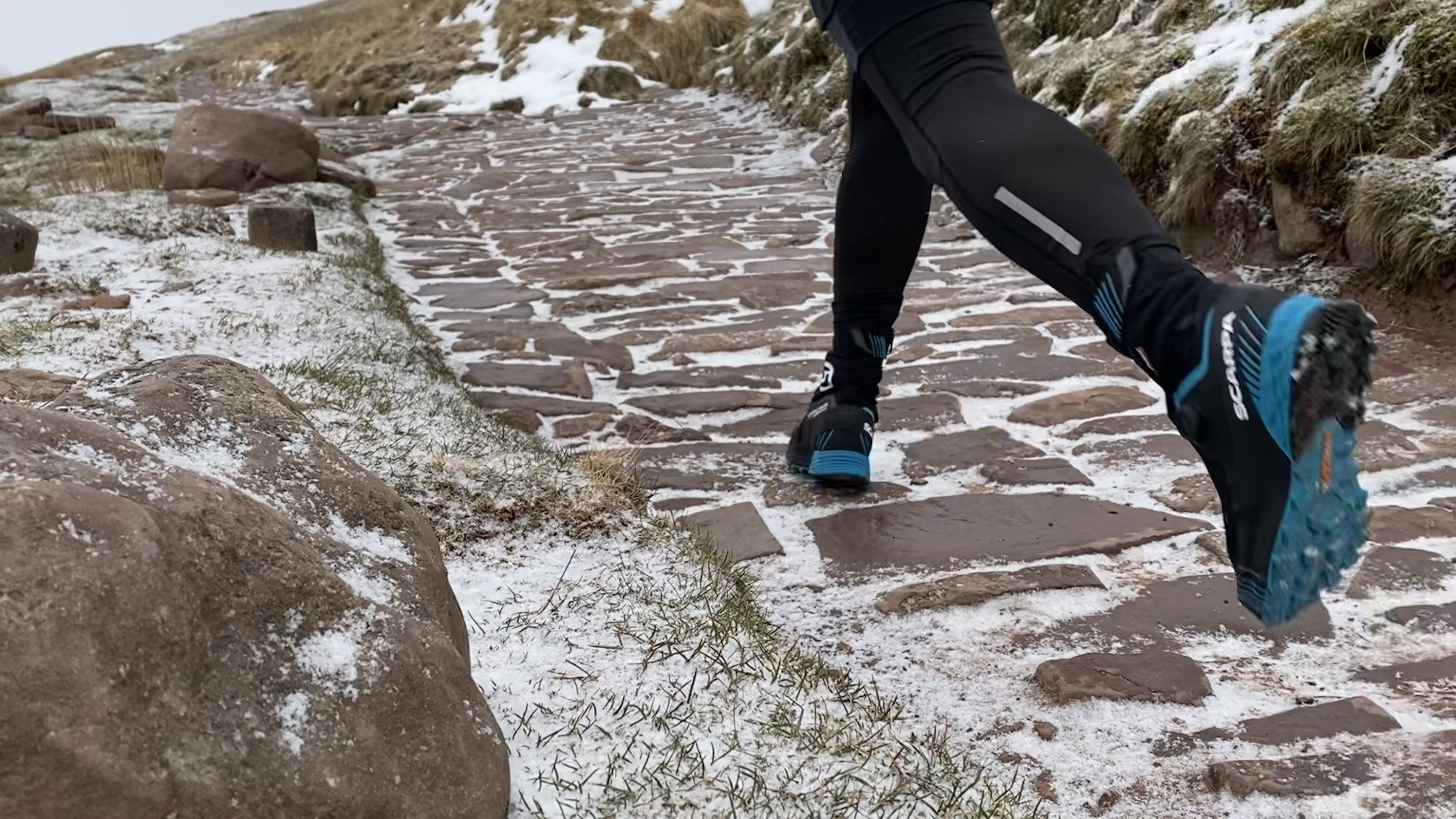
Like a mountaineering boot, the upper is protected by a 360-degree, protective TPU rand. This guards the foot against prickly vegation and abrasion with rock and hard ice. Scarpa’s Ribelle – Italian for rebel – range features everything from lighter trail running shoes up to winter mountaineering boots. The common thread is the range’s lightweight and agile qualities, which we were also impressed with when we reviewed the Ribelle Lite HD winter boot.
The upper features WinTherm active insulation, which is a thermoregulatory membrane that marries warmth and breathability. A medium density EVA midsole provides a decent amount of cushioning, while Scarpa’s proprietary Presa outsole provides the rest of what is a high degree of underfoot protection. This is just what the doctor ordered where technical, rocky terrain is concerned.
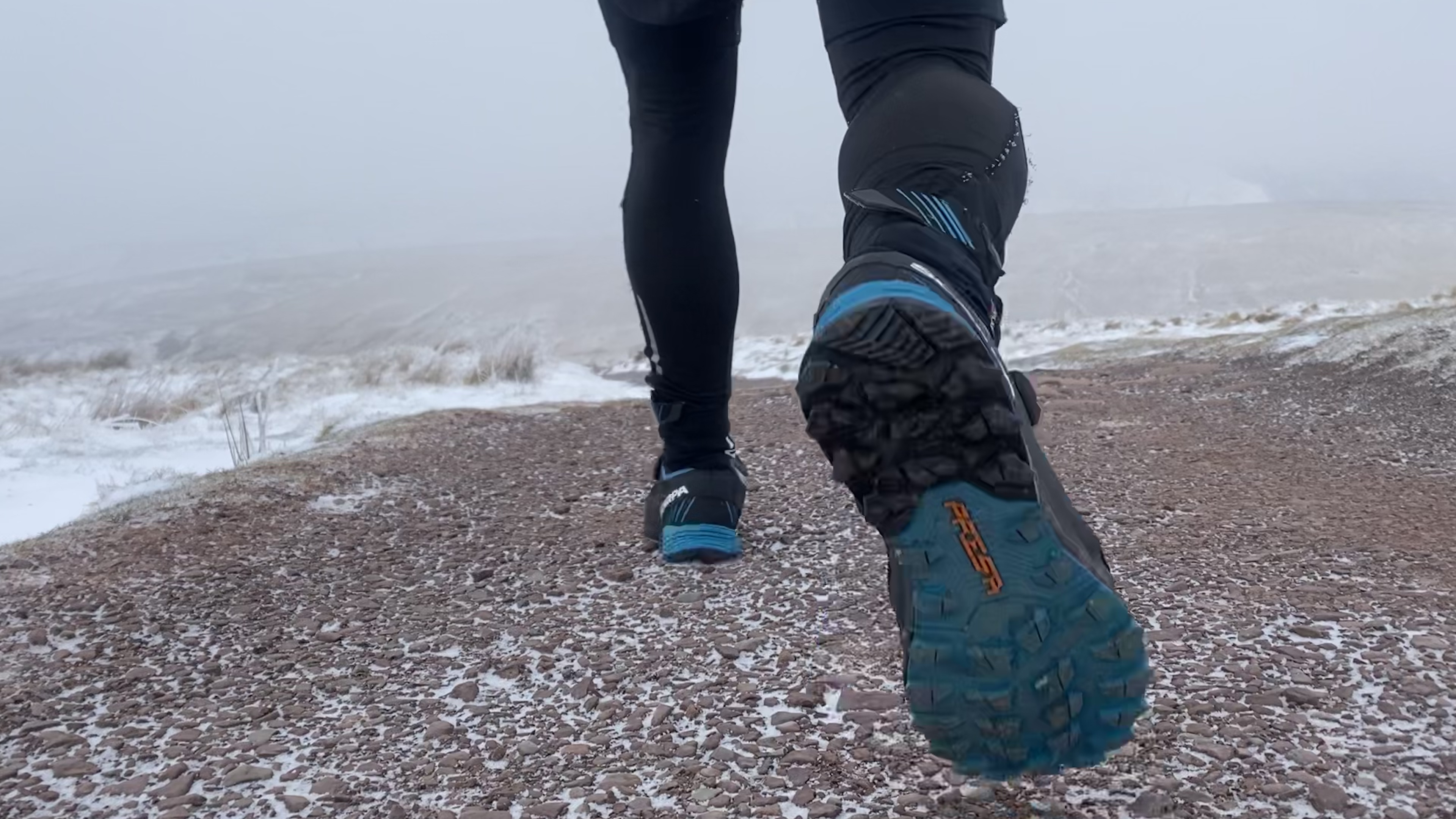
The 4mm lugs are designed to provide claws for gripping mud but also provide plenty of surface area on the rocky stuff. A directional tread design is intended to provide a breaking zone at the rear and a push zone at the front.
Scarpa Ribelle Run Kalibra G: on the trails
I’ve been hitting English and Welsh mountain trails in the Ribelle Run Kalibra G’s for two winters now and I always look forward to an excuse to take them out. I wouldn’t wear them for summer runs, as they’re a little bit overkill, but as soon as winter arrives in the hills, I’m off!
The 4mm lugs aren’t as grippy as some when it comes to really muddy terrain, but they hold their own in most scenarios. On rock, they provide solid traction, giving me the confidence to scramble on moderately technical terrain. I was able to negotiate snowy ground fairly well, though icy stuff calls for some form of spike. There’s nothing to stop you adding microspikes, though this still wouldn’t make them suitable for steeper, mountaineering terrain.
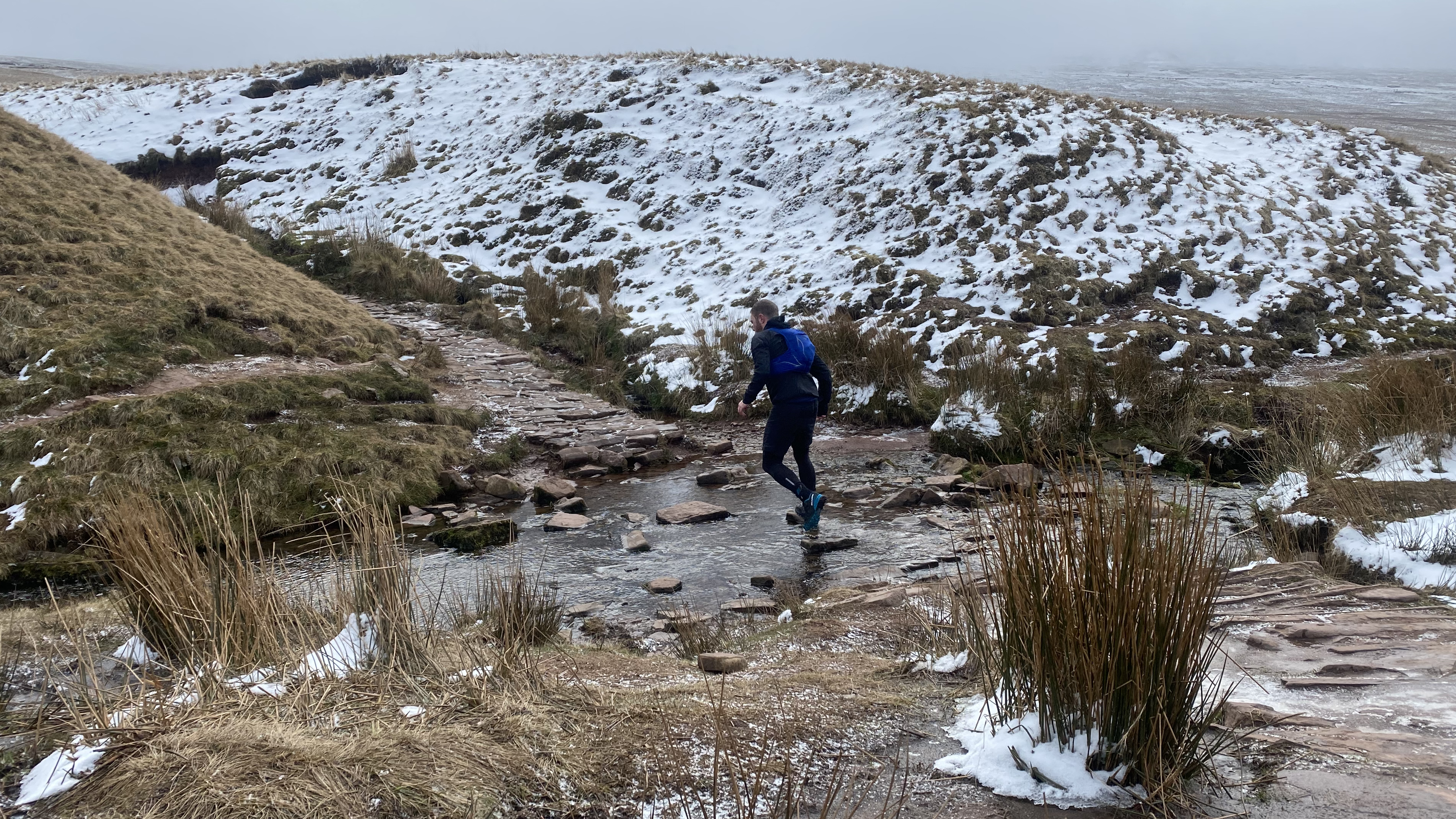
Protection wise, I’ve been very impressed. Never did my feet feel like they’d been through the wringer, as can be the case when taking lighter trail running shoes onto technical terrain for sustained period. I’ve not experienced a significant downpour in them yet but they’ve joined me on plenty of wet and snowy trails and I haven’t noticed any water ingress.
Yes, they’re heavy. However, they’re not so heavy that it’s overly noticeable when exploring the mountains at speed, while the additional protection they provide is obvious. So, for me, it’s a good trade-off. Personally, I’m in the mountains for the experience rather than for competition, FKTs and bragging rights.
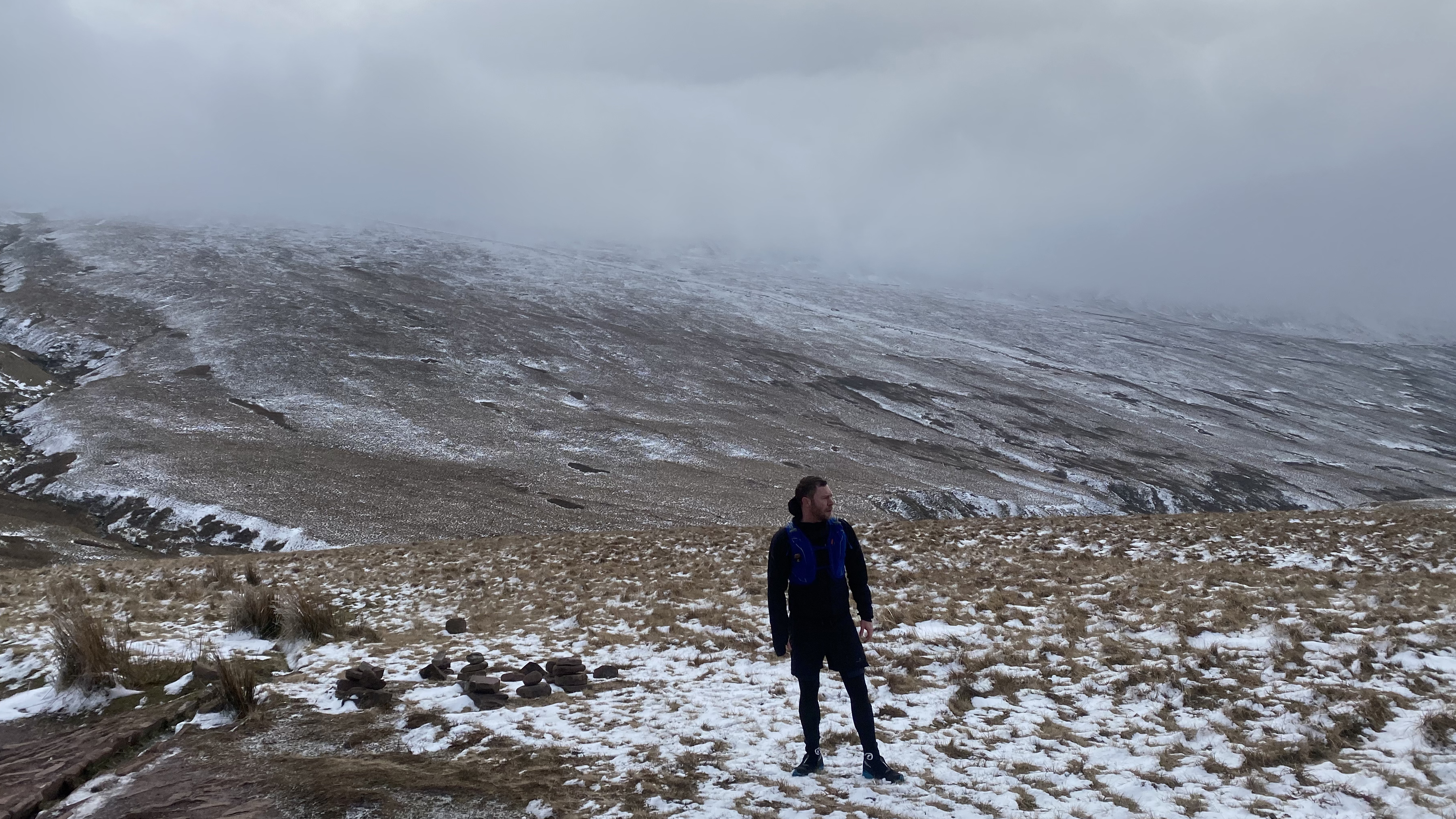
In terms of comfort, they’re generally good, though there’s one pressure point at the very top of the lacing system towards the front of the foot. When this part of the foot flexes, there’s a little bit of resistance here. It’s not a biggie, but it’s enough to notice and could cause an issue if running something like an ultra. However, it should be stated that Scarpa market these as medium-distance shoes.
Despite the fact that I’ve not run in them during the warmer months, they make for a good hiking shoe during the shoulder seasons. The level of protection, insulation and grip they provide, coupled with their lightweight qualities make them ideal for fast summit bagging missions. If you’re spending this much on a pair of trail runners, you might as well get the most out of them.







